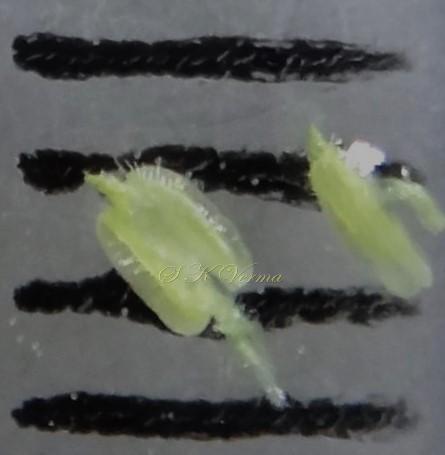CUCUMIS
Cucumis
L., Sp. Pl. 1011. 1753; Gen. Pl. ed. 5: 442. 1754; Benth. & Hook.f., Gen. Pl. 1: 826. 1867; Cogn. in A.& C. DC., Monogr. Phan. 3: 497. 1881; Clarke in Hook.f., Fl. Brit. Ind. 2: 619. 1879; Chakravarty, Monogr. Ind. Cucurbit. in Rec. Bot. Surv. Ind. 17(1): 98. 1959; Nazim. & Naqvi, Fl. Pak. in eFloras.org p. 41; Lu & Jeffrey, Fl. China @eFloras.org 19: 48; Mukia Arnott, Madras Journ. Lit. Sc. 12: 50. 1840.
Annual or perennial, scandent or creeping, mostly monoecious. Stems and leaves mostly scabrid or hispid. Tendrils simple. Leaf blade almost orbicular, reniform, cordate-ovate or triangular-hastate, undivided or palmately 3-7-lobed, margin dentate or serrate. Male flowers mostly fascicled. Calyx campanulate, lobes 5, subulate. Corolla yellow, turbinate, rotate or sub-campanulate, 5-lobed; lobes oblong or ovate, acute. Stamens 3, free, inserted on corolla tube; anthers oblong, one 1-celled, two 2-celled, anther cells linear, reflexed or curved; filaments short; connectives produced, bifid; pistillode glandular. Female flowers solitary or fascicled, sometimes coaxillary with male flowers; calyx and corolla as in male flowers; staminodes 3, setiform, ligulate or subulate. Tricarpellary, syncarpous, ovary cylindric, ellipsoid, ovoid or globose, usually densely hairy, ovules few to numerous, horizontal, placentation parietal; Fruit polymorphic, fleshy, indehiscent, smooth or verrucose. Seeds few to numerous, compressed, emarginate or marginate.
62 species
Cucumis maderaspatana
Cucumis maderaspatana
L., Sp. Pl. 1012. 1753; Mukia maderaspatana (L.) M. Roem., Fam. Nat. Syn. Monogr. 2: 47. 1846; Clarke in Hook.f., Fl. Brit. Ind. 2: 625. 1879; Jeffrey in Milne-Redhead & Polhill, Fl. Trop. E. Africa (Cucubitaceae) 115. 1967; Stewart in Nasir & Ali, Ann. Cat. Vasc. Pl. W. Pak. and Kashmir 706. 1972; Jeffrey, Kew Bull. 34: 794. 1980;Kaur & Sharma, Fl. Sirmaur 314. 2004; Fl. China @eFloras.org vol. 19: 50; Nazim. & Naqvi, Fl. Pak. @eFloras.org p. 39; M.scabrella (L.f.) Arn. in Hook., J. Bot. 3: 276. 1841; Hook.f., Fl. Brit. Ind. 2: 623. 1879; Bryonia scabrella L.f. Suppl. Pl. 424. 1781; Melothria maderaspatana (L.) Cogn. in DC. Monogr. Phan. 3: 623. 1881; Maheshwari, IIIustr. Fl. Delhi. f. 86: 1966; Chakravarty, Fasc. Fl. Ind. 11: 83. 1982.
Plants annual climber, scandent or prostrate. All parts densely yellow-brownish hispid and scabrous. Stem many branched, robust, sulcate, scabrid-hispid. Petiole 0.5-5 cm long with one adaxial groove, scabrid-hairy, hispid. Leaf blade dark green above, somewhat rigid, ovate, deltoid-ovate or ovate-cordate, 3-10.5 cm x 3-11.5 cm, 3-5 nerves at base, usually 3-5-lobed, lobes ovate or oblong, median lobe ovate-triangular, both surfaces scabrous, base cordate, margin irregularly denticulate, apex obtuse, apiculate. Tendrils moderately robust, simple, hispid-hairy. MALE FLOWERS: Axillary, in fascicles of 3-5, on 5-6 mm long hairy peduncle, 2-4 mm long and 4-6 mm across. Pedicels 1-4 mm long, hispid or absent. Calyx campanulate; hispid; tube ca. 2 mm x 1.5-2 mm; lobes 5, reflexed, subulate, 1-1.5 mm x ca. 1 mm. Corolla yellow, rotate or campanulate; lobes 5, ovate-oblong, 2 mm x 1-1.2 mm puberulent. Stamens 3, free, 2 2-celled and one 1-celled, inserted on calyx tube; filaments short, ca. 0.5 mm long, slightly pilose, anthers oblong, ca. 1 mm long, ciliate; connective distinct. Rudimentary ovary globose. FEMALE FLOWERS: Solitary or 3-5 fasciculate, 4-5 mm long; pedicel short, hispid. Calyx and corolla as in male flowers. Staminodes 3, small, subulate, 0.5 mm long. Annular disc around style base. Ovary ovoid or globose, hispid; ovules few, horizontal; style 1.25-1.5 mm long, stigmas 2-3. Fruits 1-5 in axillary clusters; fruiting pedicels short, green and pale-green, striped, red when mature, globose, 5-10 mm in diameter, glabrous or with few coarse hairs. Seeds 4-6, ovate, ca. 4 mm x 2.5 mm, ca. 2.5 mm thick, both surfaces convex, indistinctly marginate.
Common Names: Bristly Bryony, Madras Pea Pumpkin, Rough Bryony; Bilari, Gwalakakri, Kachari, Musmusa, Paripushkara, Pindila, Send, Setu(Hindi)
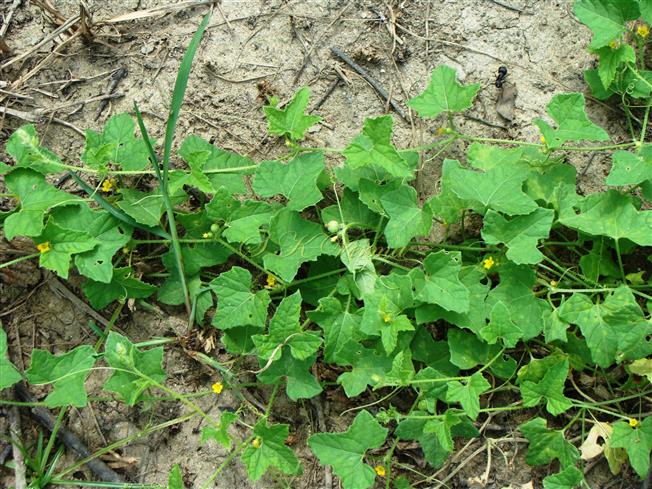
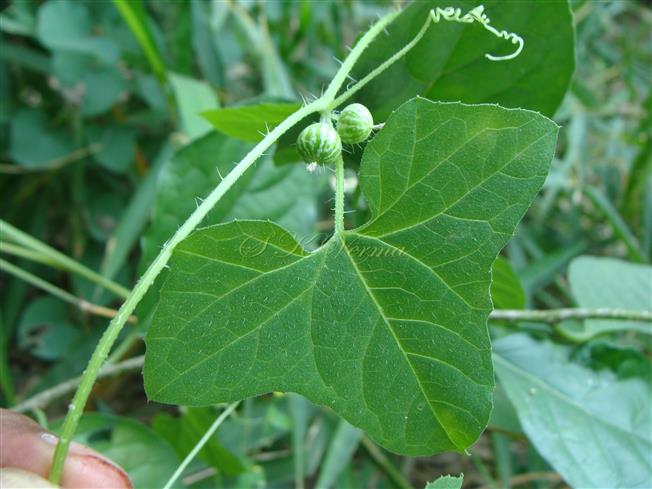
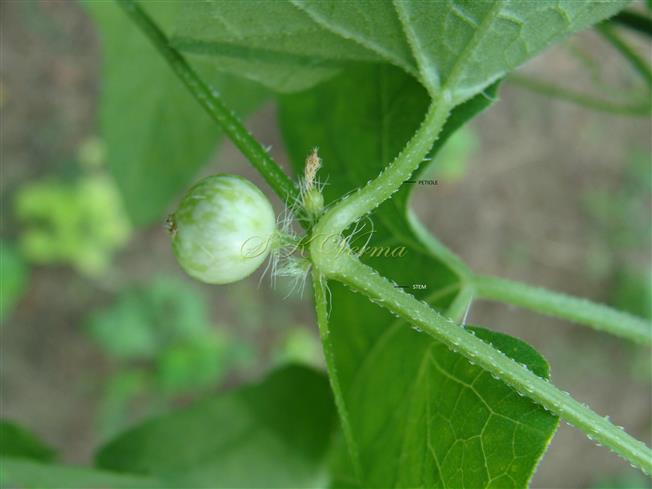
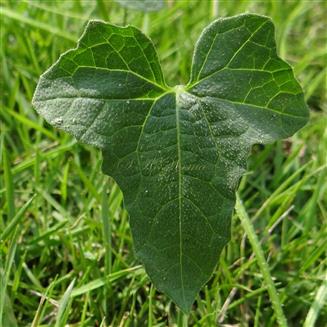
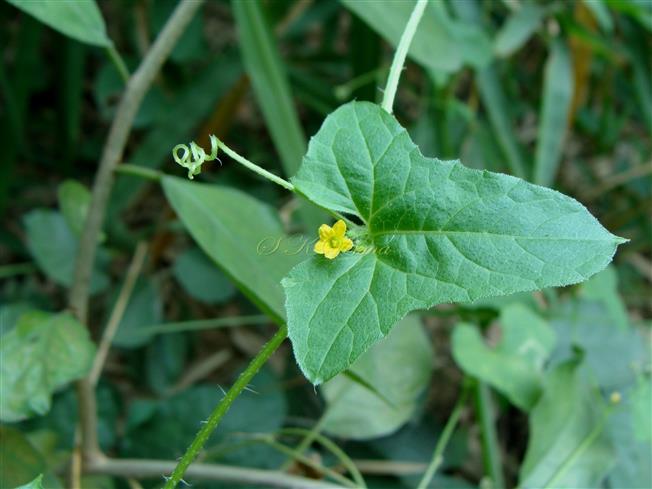
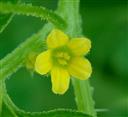
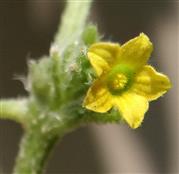
 with stamens-DSC00151.jpg)

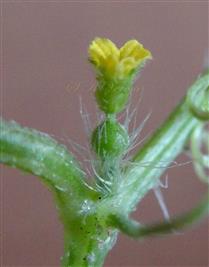
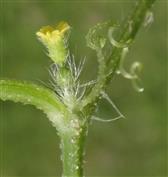
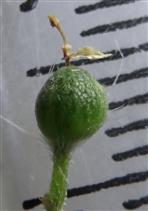
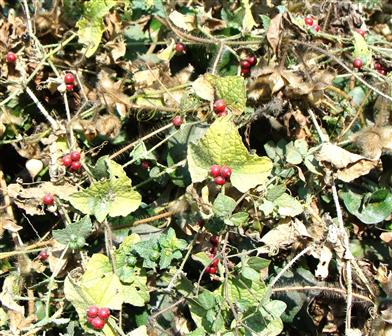
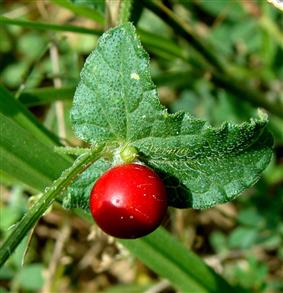
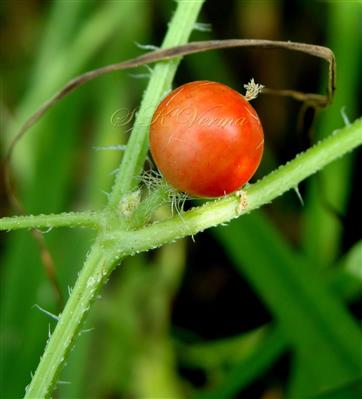
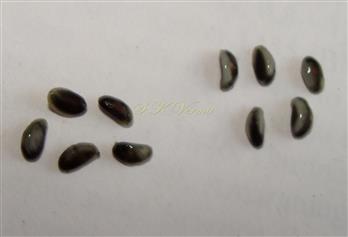








 with stamens-DSC00151.jpg)
